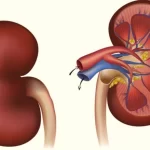Are you ready to embark on a journey of self-discovery and flexibility? Look no further than Paschimottanasana, the ultimate yoga pose for unleashing your inner yogi. Whether you’re a beginner or an experienced practitioner wanting to perfect this graceful posture, our step-by-step guide will take you by the hand and lead you toward mastering Paschimottanasana. Get ready to stretch your limits, both physically and mentally, as we delve into the secrets of this awe-inspiring asana. So grab your mat, breathe deeply, and let’s dive into the world of Paschimottanasana yoga together!
What is Paschimottanasana Yoga?
Paschimottanasana yoga is a type of Hatha yoga that focuses on stretching the muscles of the back, buttocks, and hamstrings. It is often used to relieve lower back pain and improve flexibility. The name Paschimottanasana comes from the Sanskrit words “pascha” meaning “west” or “back,” “mottana” meaning “stretch,” and “asana” meaning “pose.”
To do Paschimottanasana yoga, start by sitting on the floor with your legs extended straight in front of you. Bend forward from your hips, keeping your spine straight as you reach for your toes. If you can’t reach your toes, grab a strap or towel around your ankles and gently pull yourself forward. Hold this position for 30 seconds to 1 minute. You can then release the stretch by coming back to a seated position.
Benefits of Doing Paschimottanasana Yoga
Paschimottanasana, or “seated forward bend,” is a yoga pose that offers a variety of benefits for beginners. This pose helps to improve flexibility in the back and hamstrings, as well as strengthen the spine. Additionally, Paschimottanasana can help to calm the mind and relieve stress.
Props and Preparations for the Pose
To prepare for Paschimottanasana, you will need a yoga mat, a strap, and a blanket. If you have any neck or back problems, please consult your doctor before performing this pose.
Begin by sitting on your mat with your legs extended straight in front of you. If your hamstrings are tight, you may want to place a blanket under your sit bones to elevate them. Place the strap around your feet and hold onto the ends with your hands. Inhale and lengthen your spine. As you exhale, begin to bend forward from your hips, keeping your spine long. If you can reach your toes, grasp them with your hands. If not, loop the strap around your feet and hold onto the ends with both hands. Continue to breathe and slowly walk your hands down the strap as you fold forward. Hold the pose for at least 30 seconds or longer if desired. To release the pose, inhale and gently lift yourself up from the straps using your arms. Exhale and release the straps from around your feet. Sit up tall on your mat and take a few deep breaths before moving on to the next pose.
Step-by-Step Guide to Mastering Paschimottanasana Yoga
This pose may seem daunting at first, but with this step-by-step guide, you’ll be a pro in no time!
- Start seated on your mat with your legs extended straight in front of you.
- Bend forward from your hips, keeping your back flat and chest open. Reach your hands toward your feet, clasping them around your ankles if possible.
- Hold this position for 30 seconds to 1 minute, then release and return to starting position.
Common Misconceptions about Paschimottanasana Yoga
Paschimottanasana, or “seated forward bend,” is one of the most basic and essential yoga poses. Despite its simplicity, however, many beginners find themselves struggling with this pose. Part of the reason for this may be because there are a number of common misconceptions about the pose that can make it seem more difficult than it actually is. Let’s take a look at some of these misconceptions and clear them up so you can approach your next Paschimottanasana with confidence!
One common misconception about Paschimottanasana is that it should be performed with the legs straight. In reality, however, you may find it more comfortable to bend the knees slightly in this pose. This will help to release any tension in the hamstrings and lower back, making it easier to achieve a deep forward bend.
Another misconception is that Paschimottanasana should be done with an empty stomach. While it’s generally best to practice yoga on an empty stomach, this isn’t always possible or practical. If you do eat before practicing Paschimottanasana, try to give yourself at least an hour to digest your food before starting your yoga session.
Some people believe that they need to touch their toes in order to properly perform Paschimottanasana. However, this isn’t necessarily true. The goal of the pose is simply to fold forward from the hips as far as you can comfortably go without rounding the back
How to Use This Pose in Practice
Paschimottanasana, or “seated forward bend,” is a yoga pose that offers many benefits for beginners. This pose can help to improve flexibility, relieve stress and tension, and boost energy levels. Paschimottanasana can be performed by anyone, regardless of their fitness level or yoga experience.
To perform this pose, begin by sitting on the floor with your legs extended straight in front of you. If needed, use a yoga block or pillow to support your back. Take a deep breath in, then exhale as you slowly lean forward from your hips. Reach your hands toward your feet and grab hold of your ankles or shins. If you cannot reach your feet, simply place your hands on the floor in front of you.
Once you are in the forward bend position, take several deep breaths and hold the pose for at least 30 seconds. To release the pose, slowly roll back up to a seated position and take a few deep breaths before repeating the pose 2-3 more times.
Additional Resources for Learning More About Paschimottanasana Yoga
Paschimottanasana yoga is an excellent way to improve your flexibility and reduce stress. But like any practice, it takes time and patience to master the poses. The following resources can help you learn more about Paschimottanasana yoga and start practicing on your own:
-Yoga Journal’s “Paschimottanasana Pose Guide”: This step-by-step guide includes photos and instructions for each stage of the pose, making it a great resource for beginners.
-DoYogaWithMe’s “Paschimottanasana Video Tutorial”: This video provides a detailed overview of the pose, including tips on alignment and breath work.
-Yoga International’s “3 Tips For Improving Your Paschimottanasana”: This article offers helpful advice on how to make the most of your practice, including modifications for beginners.
Conclusion
Yoga is a great way to reduce stress, improve flexibility and strength, and stay in shape. Learning the basics with Paschimottanasana can help you get started on your journey into the world of yoga. With careful practice and patience, anyone can master this pose in no time at all. Now that you know how to do Paschimottanasana correctly, why not give it a try today? You are sure to reap its many benefits!






